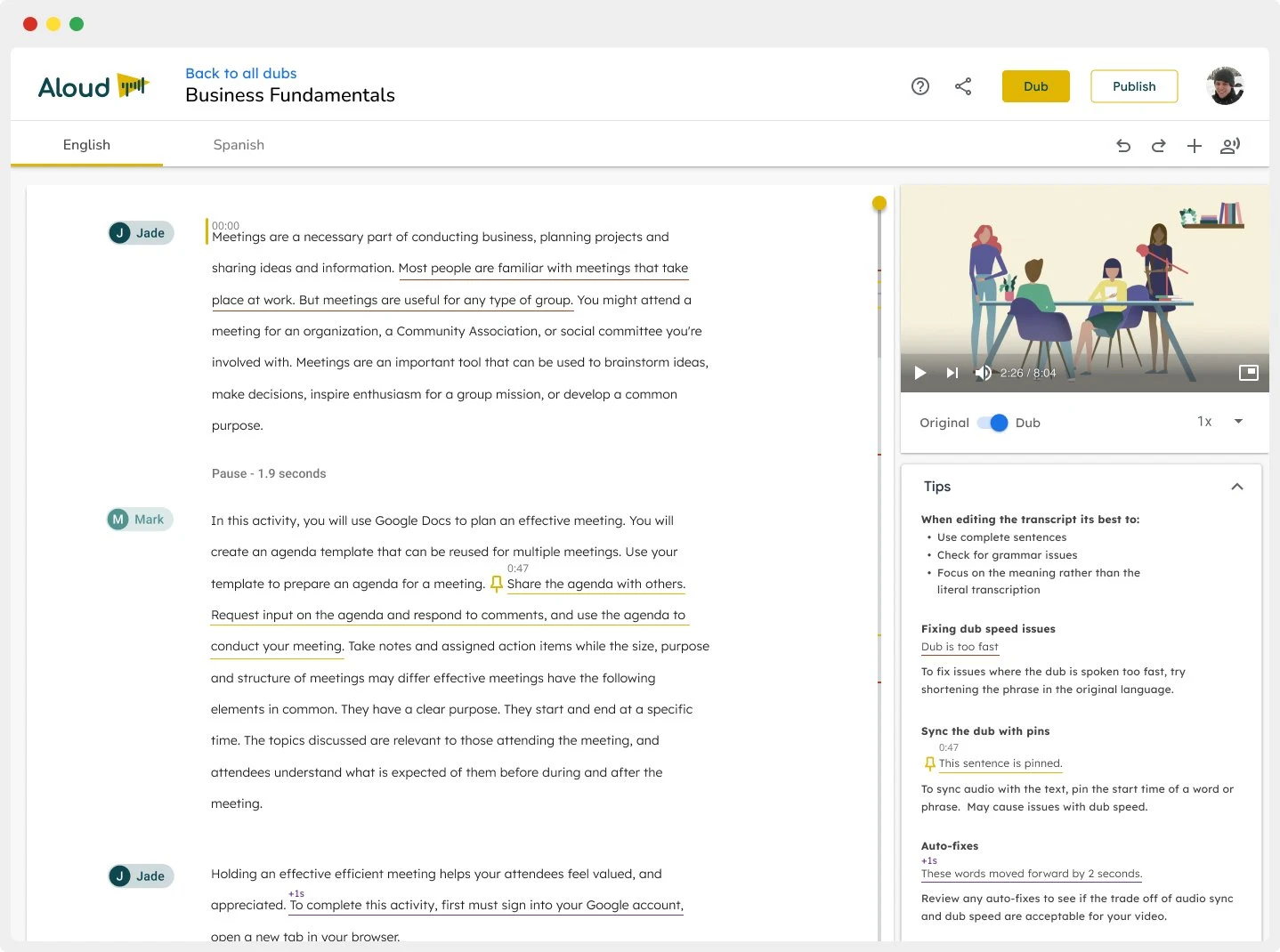It’s been quite a long time since Google diversified from just being a search engine company, and this was made official when Google itself just became one subsidiary that is owned by an umbrella corporation known as Alphabet. A lot of the products and services that Google has been working on have been more or less in line with global trends such as its Android operating system, Chrome browser, Chrome OS and others, but it has an experimental unit called Area 120 as well.
Area 120 is essentially an incubator for new and innovative ideas, and with all of that having been said and now out of the way it is important to note that the latest project that this team has been working on might be its most effective yet. This project is called Aloud, and it is basically a program that allows people to create automatically generated dubbing for their videos with all things having been considered and taken into account.

This is something that most content creators would be very excited to use because of the fact that this is the sort of thing that could potentially end up allowing them to obtain a much more international audience. What’s more is that it can take things beyond the AI generated subtitles that people can look into, many of which are so poor in quality that they do not represent what is being said in the video at all.
Google already has some incredible advanced machine translation, audio separation and speech synthesis technology. Aloud combines all of these to create an AI that can make translation easier than ever before. We are heading for a world where cultural and linguistic boundaries are going to stop mattering quite as much as they used to, and projects like Aloud are going to play a huge role in that. YouTube creators often struggle to break outside of audiences that speak their native language, so this can be a great new piece of tech that many of them are going to want to use as soon as they can.
Read next: Google Invests $3 Million Into Data Transfer Project
Area 120 is essentially an incubator for new and innovative ideas, and with all of that having been said and now out of the way it is important to note that the latest project that this team has been working on might be its most effective yet. This project is called Aloud, and it is basically a program that allows people to create automatically generated dubbing for their videos with all things having been considered and taken into account.

This is something that most content creators would be very excited to use because of the fact that this is the sort of thing that could potentially end up allowing them to obtain a much more international audience. What’s more is that it can take things beyond the AI generated subtitles that people can look into, many of which are so poor in quality that they do not represent what is being said in the video at all.
Google already has some incredible advanced machine translation, audio separation and speech synthesis technology. Aloud combines all of these to create an AI that can make translation easier than ever before. We are heading for a world where cultural and linguistic boundaries are going to stop mattering quite as much as they used to, and projects like Aloud are going to play a huge role in that. YouTube creators often struggle to break outside of audiences that speak their native language, so this can be a great new piece of tech that many of them are going to want to use as soon as they can.
Read next: Google Invests $3 Million Into Data Transfer Project
